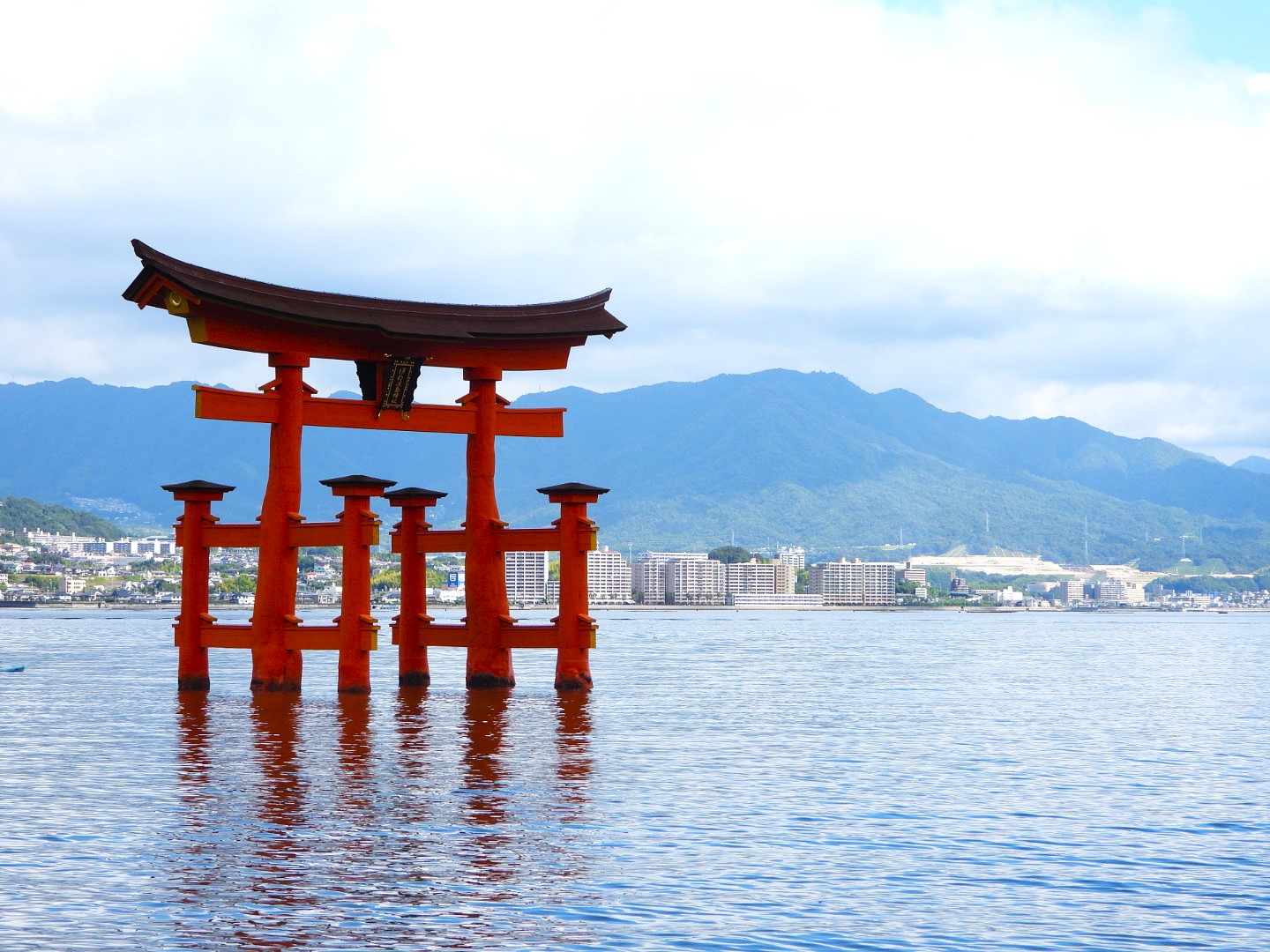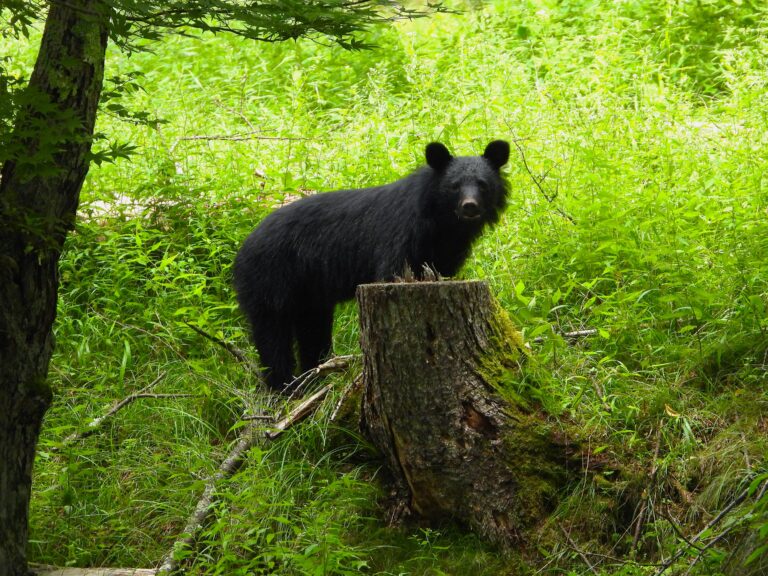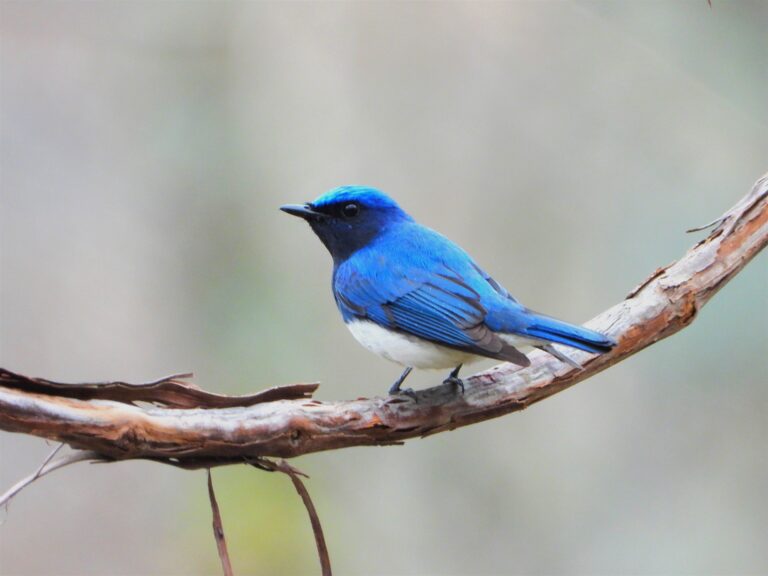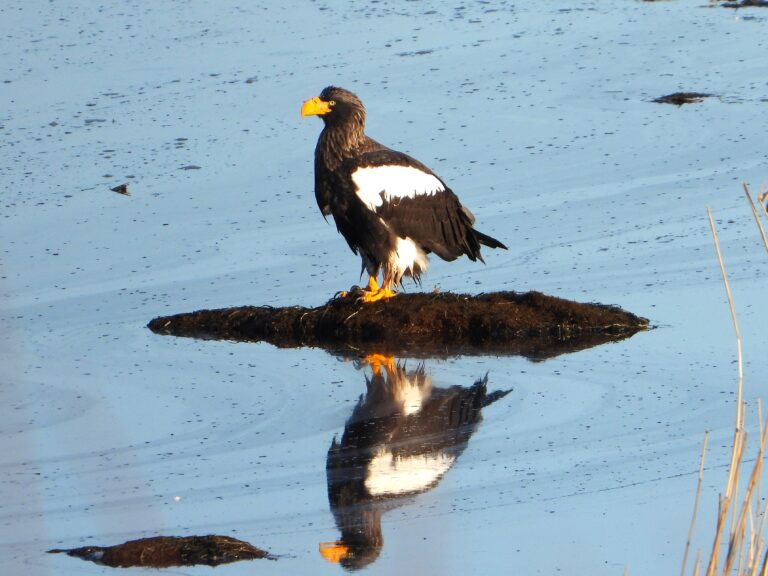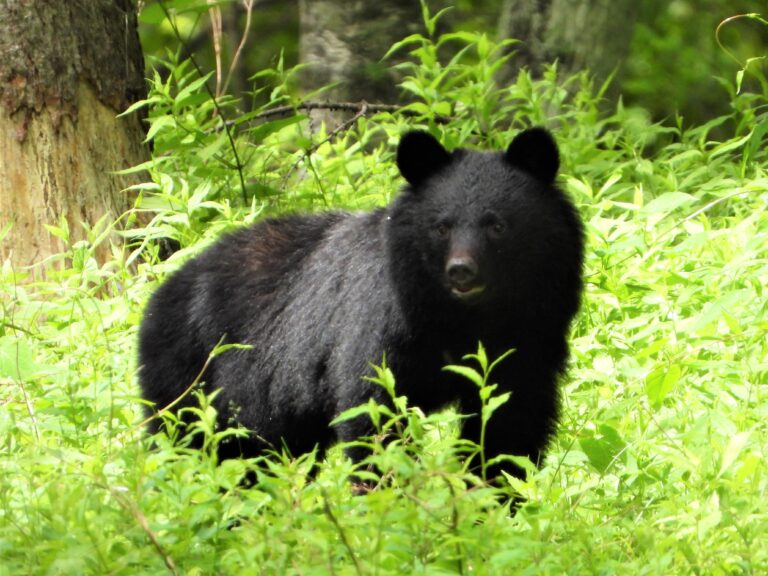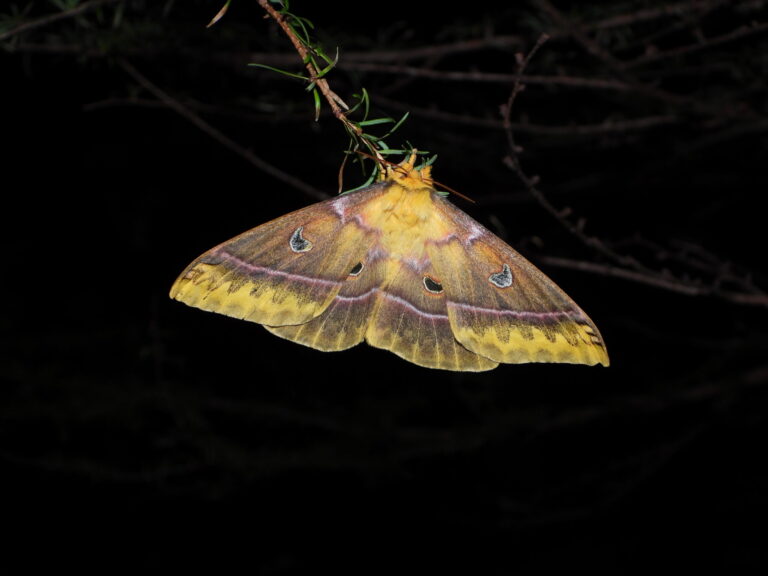Miyajima Deer (Sika Deer) – Wildlife of Japan
Introduction
On Miyajima (Itsukushima Island) in Hiroshima Prefecture, sika deer (Cervus nippon) roam freely through streets, shrine paths, and coastal areas. Their presence near the famous “floating” torii gate of Itsukushima Shrine has made them an iconic symbol of the island. Managed as wild animals rather than pets, the deer are not fed by locals, and visitors are strongly advised to follow the no-feeding rule.

Appearance
Miyajima deer are medium-sized sika deer. In summer, their coats are reddish-brown with white spots; in winter, they darken to a deep brown. A distinct white rump patch is a key feature of the species. Males grow antlers, which they shed and regrow each year. Fawns have prominent white spots. Compared with the deer of Nara, Miyajima deer are often smaller and slimmer.
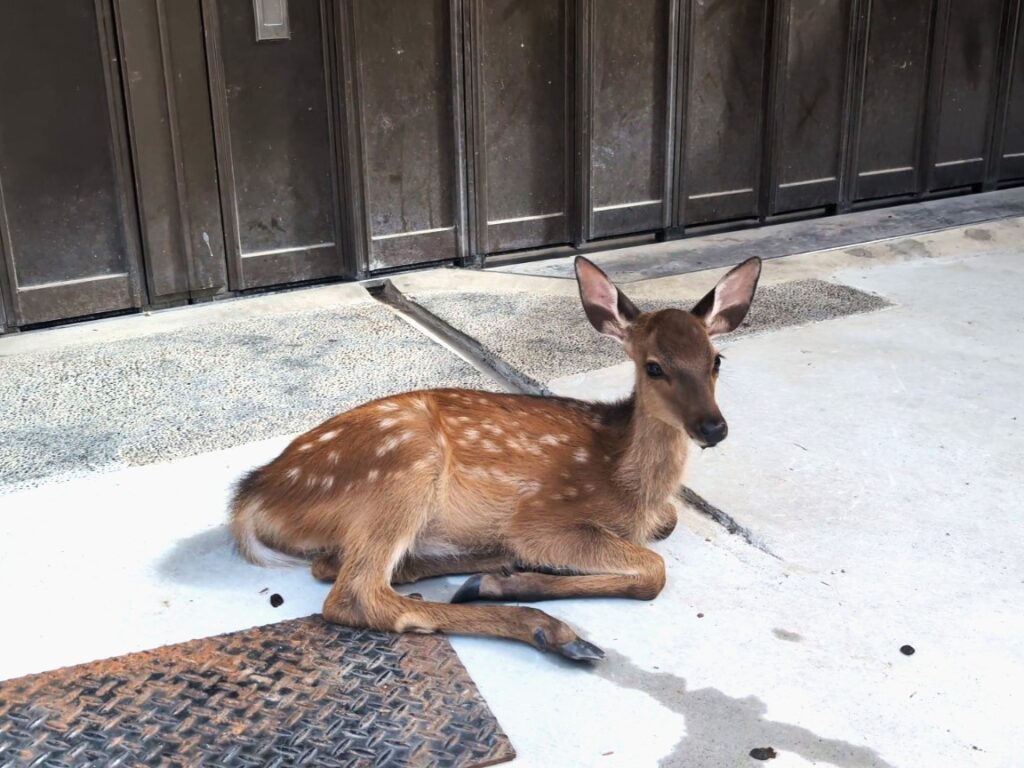
Habitat
The deer are commonly seen around the ferry terminal, Omotesandō shopping street, Itsukushima Shrine, and Momijidani Park, but they also wander into forested slopes. Although they are habituated to humans, they remain wild animals and should be observed respectfully from a distance. Local signage reminds visitors not to get too close.
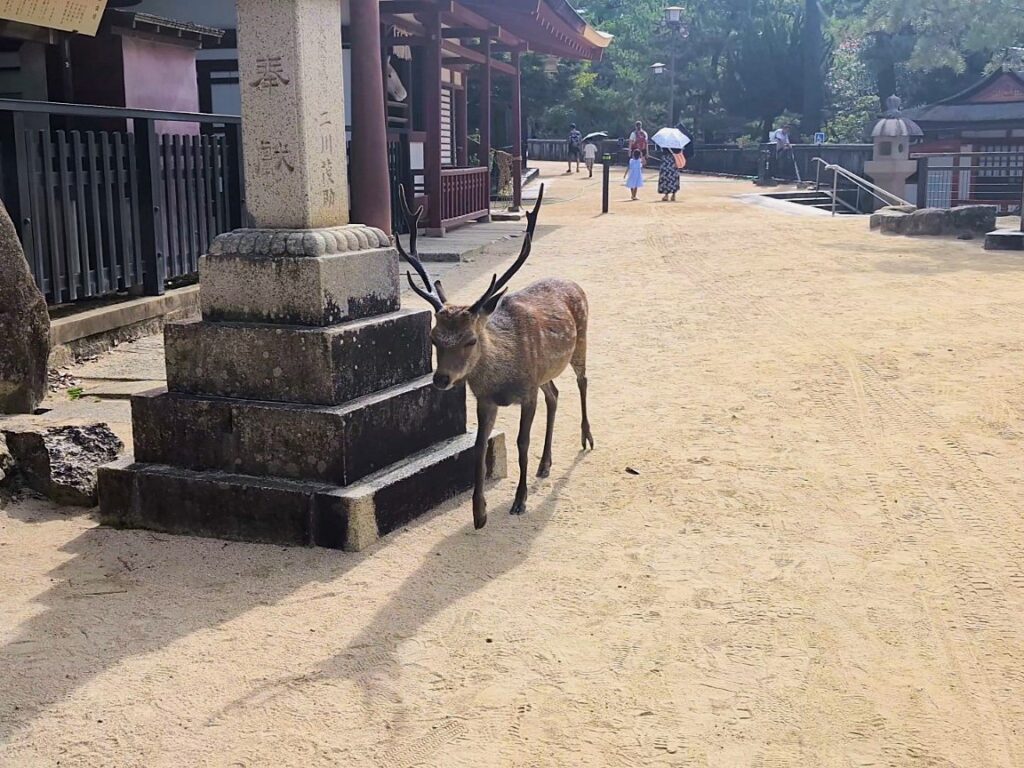
Behavior
Miyajima deer are known for their boldness around people. They sometimes sniff at bags or pockets and are notorious for eating paper items such as maps and tickets. Feeding or teasing them with food is strictly prohibited, as it creates health and safety issues.
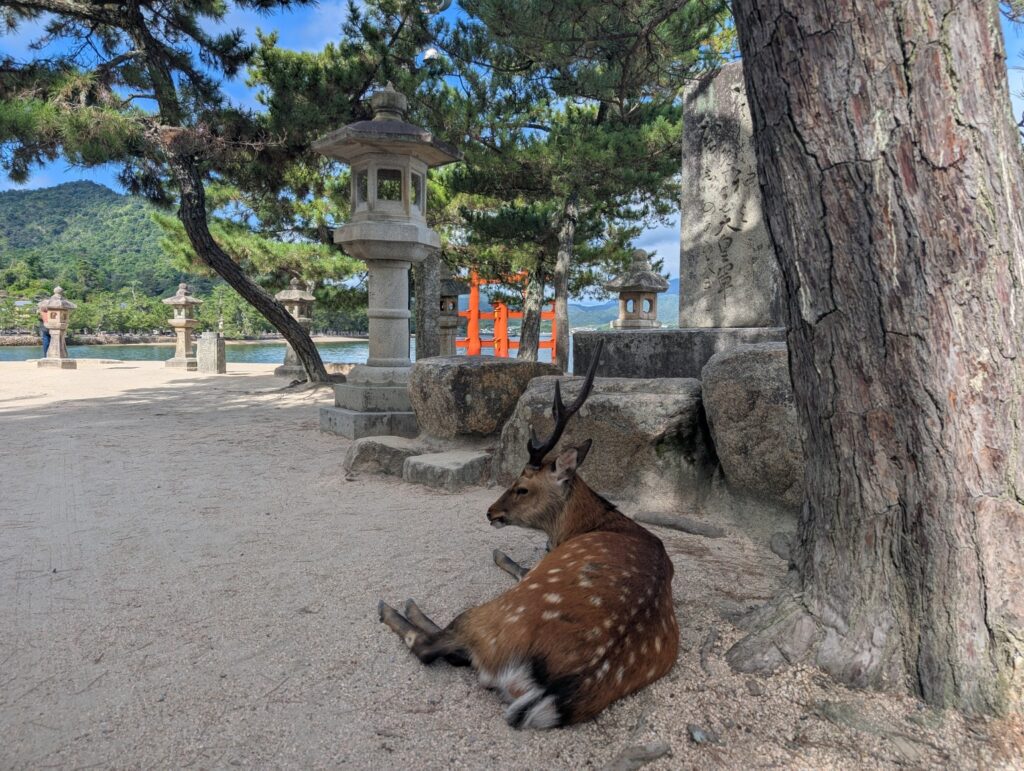
Diet
In nature, they browse on leaves, buds, grasses, and acorns. However, human food and waste have caused serious problems: deer often ingest plastic or packaging, which can accumulate in their stomachs and cause illness or death. Carrying out trash and keeping food sealed is essential for their protection.
Reproduction
As with other sika deer, the rut occurs in autumn. After a gestation period of about seven months, females give birth to a single fawn in late spring or early summer. Fawns hide in vegetation while the mother forages, and they become independent after about one year.
Conservation & Management
Globally, the sika deer is classified as Least Concern by the IUCN, but the Miyajima population faces local challenges. Issues include trash ingestion, crop damage, and conflicts with tourists. Hatsukaichi City manages them as wild animals: feeding is banned, waste control measures are enforced, and education campaigns are ongoing. Since the 1970s, antler cutting has also been practiced to reduce accidents in town areas.
Visitor Etiquette
- Do not feed the deer (there are no “deer crackers” on Miyajima).
- Avoid chasing or crowding them for photos.
- Keep maps, tickets, and paper items secured in your bag.
- Take all trash with you and never leave plastics or food waste within reach.
Author’s Impression
The combination of sea and deer on Miyajima is truly unique. Seeing deer quietly walking along the shoreline near the torii gate or resting in the maple shade was unforgettable. My best encounters came in the early morning, when the island was calm and the deer moved freely in a peaceful atmosphere.
Scientific Notes
- Species: Cervus nippon (Sika Deer)
- IUCN Status: Least Concern

